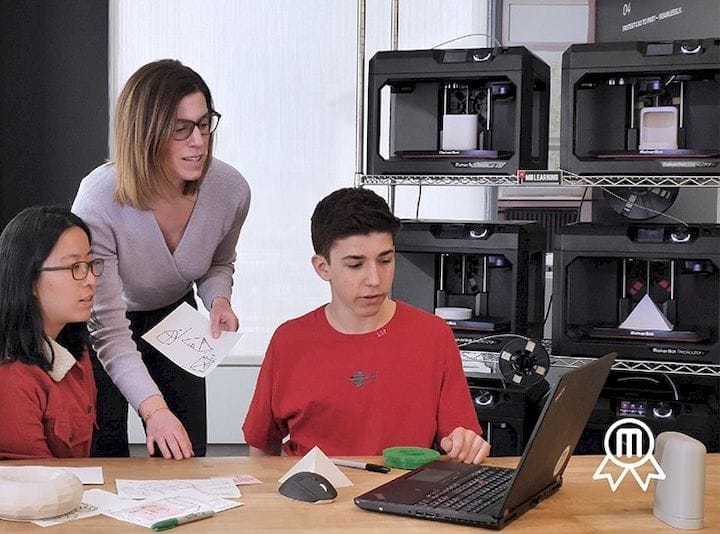![MakerBot’s new certification program takes a different approach [Source: MakerBot]](https://fabbaloo.com/wp-content/uploads/2020/05/Student-Certification-Blog_result_img_5eb098b6cbd08.jpg)
MakerBot is taking a slightly different approach to introducing 3D printing to students, and I think it’s the right way.
After the crash in consumer interest in 3D printing in 2015, many 3D printer manufacturers desperately sought new markets to take the place of the hoped-for giant consumer market. While some focused on the 3D printing professional market, many others stepped towards the educational market.
MakerBot was perhaps the epitome of this scenario, having been one of the very first desktop 3D printing companies in existence, growing almost solely on consumer interest in its initial spurt. They, like the others, had to refocus their efforts. After some time it now seems pretty clear their major focus is on the educational market.
They’ve produced a number of features and services that cater to the educational market, and in particular make good use of their Thingiverse 3D model repository.
Like many other 3D printer manufacturers pursuing the educational marketplace, MakerBot provides services such as lesson plans. It seems that is now the ante to get into that market. But this month MakerBot introduced a new program that seems a little different.
They announced the “MakerBot Certification Program for Students”. This is a badging program that I think could significantly stimulate interest in 3D printing by STEM students. Here’s how it works.
An online course series is divided into four parts. Each section focuses on a different core aspect that is absolutely required for successful 3D printing. They are:
-
3D printer operation, in which the student learns how to properly operate a 3D printer (or at least a MakerBot device), including troubleshooting.
-
Design thinking, where students learn how to examine a physical situation to determine possibilities.
-
Applied design, where students leverage their design thinking skills to solve actual physical problems using 3D printing.
-
Design for 3D printing, in which students would learn the proper ways of generating printable 3D models.
As the students complete these sections, they are awarded an official certification. The goal here, obviously, would be for the student to collect all the badges.
This is of great interest to me because it provides a motivation for students by ramifying the learning process. Everyone is attracted by games, and I’m sure that students, when seeing their buddies proceed through the modules, will want to catch up and collect the same badges.
Contrast this to other educational programs from 3D printing companies that focus solely on the educator. While that’s necessary, it provides no motivation for uninterested students. MakerBot’s CEO, Nadav Goshen, said:
“We recognized very early on that teachers needed more than just a 3D printer; they needed a learning tool. As a result, we developed a full line of offerings for educators, including the MakerBot Certification Program for Educators, launched in April 2018. Following the success of the program, teachers wanted a similar program for their own students.”
This transforms the 3D printing educational process from a “push” to a “pull” by students. It practically guarantees that students Will want to perform 3D printing, and what could be better than that?
Via MakerBot











CoreXY is becoming a very popular approach for 3D printer motion systems, but is it the ultimate answer? We list the advantages and disadvantages.